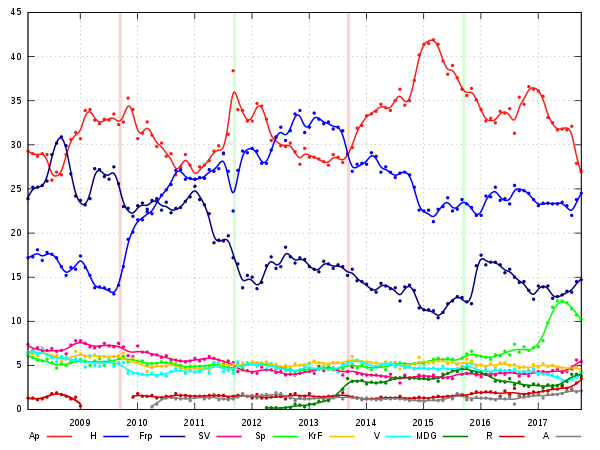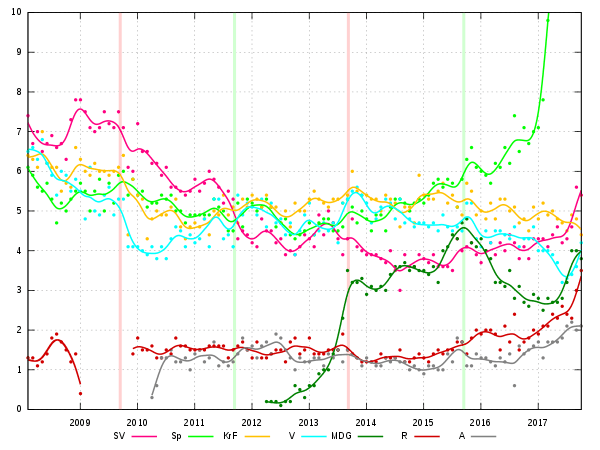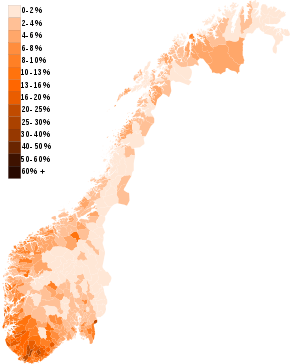Norwegian parliamentary election, 2017
|
| |||||||||||||||||||||||||||||||||||||||||||||||||||||||||||||||||||||||||||||||||||||||||||||||||||||||||||||||||||||
| |||||||||||||||||||||||||||||||||||||||||||||||||||||||||||||||||||||||||||||||||||||||||||||||||||||||||||||||||||||
All 169 seats in the Storting 85 seats are needed for a majority | |||||||||||||||||||||||||||||||||||||||||||||||||||||||||||||||||||||||||||||||||||||||||||||||||||||||||||||||||||||
|---|---|---|---|---|---|---|---|---|---|---|---|---|---|---|---|---|---|---|---|---|---|---|---|---|---|---|---|---|---|---|---|---|---|---|---|---|---|---|---|---|---|---|---|---|---|---|---|---|---|---|---|---|---|---|---|---|---|---|---|---|---|---|---|---|---|---|---|---|---|---|---|---|---|---|---|---|---|---|---|---|---|---|---|---|---|---|---|---|---|---|---|---|---|---|---|---|---|---|---|---|---|---|---|---|---|---|---|---|---|---|---|---|---|---|---|---|---|
| |||||||||||||||||||||||||||||||||||||||||||||||||||||||||||||||||||||||||||||||||||||||||||||||||||||||||||||||||||||
 Most voted party by county (left) and municipality (right) | |||||||||||||||||||||||||||||||||||||||||||||||||||||||||||||||||||||||||||||||||||||||||||||||||||||||||||||||||||||
| |||||||||||||||||||||||||||||||||||||||||||||||||||||||||||||||||||||||||||||||||||||||||||||||||||||||||||||||||||||
A parliamentary election was held in Norway on 11 September 2017. The non-socialist parties retained a reduced majority of 88 seats, allowing Prime Minister Erna Solberg's Conservative-Progress coalition to remain in government.[1][2] The Liberal Party joined the coalition in January 2018 but it remained a minority cabinet due to the Christian Democratic Party's decision not to join the coalition. The three largest centre-left parties won 79 seats. The Green Party retained its single seat, while the Red Party won its first ever seat.
Previous election
The last parliamentary elections in Norway were held on 9 September 2013. The outcome was a victory for the Conservatives and their populist right-wing allies. The Conservative Party, led by Erna Solberg, and the right-wing populist Progress Party formed a two-party minority government, with Solberg as Prime Minister. The two parties received confidence and supply from two centrist parties, the Liberals and the Christian Democrats.[3]
Electoral system
The election used party-list proportional representation in nineteen multi-member constituencies, one for each of the counties of Norway.
The number of members to be returned from each constituency varies between 4 and 19. To determine the apportionment of the 169 seats amongst the 19 counties, a two-tier formula is used, based on population and geographic size. Each inhabitant counts one point, while each square kilometer counts 1.8 points.[4]
150 of the seats are regular district seats. These are awarded based on the election results in each county, and are unaffected by results in other counties. Nineteen of the seats (one for each county) are leveling seats, awarded parties who win fewer seats than their share of the national popular vote otherwise entitles them to. A party must win 4% of the popular vote in order to win compensation seats, but may still win district seats even if it fails to reach this threshold. The system for apportioning seats is biased in favour of rural areas since the area of the county is a factor, but the system of compensation seats reduces the effect this has on final party strength.[5]
Date
According to the Norwegian constitution, parliamentary elections must be held every four years. Rather uniquely, the Norwegian parliament may not be dissolved before such a parliamentary four-year term has ended, which in practice makes snap elections impossible to hold without breaking the constitutional electoral law of the country.
On 22 April 2016, the Norwegian government announced that the date of the election is set to be Monday, 11 September 2017.[6] Additionally, each municipal council may vote to extend voting by one day, by also opening the polling stations on Sunday, 10 September.
Participating parties
Eight political parties were represented in the Norwegian parliament prior to the election, all of whom went on to contest the 2017 election.
- The Labour Party (Ap) is with its 55 seats in parliament the largest party of the 2013-2017 parliament. Labour describes itself as a social-democratic party of the centre-left. The party is led by former minister of foreign affairs Jonas Gahr Støre, who has served as party leader and leader of the opposition since June 2014.
- The Conservative Party (H) is the largest party of the incumbent government. Currently, the Conservatives hold 48 seats, after having garnered close to 27 percent of the vote in the previous election. The Conservatives' party leader is Prime Minister Erna Solberg. The Conservative Party is considered to be a moderate centre-right party in the Norwegian political spectrum, and it officially subscribes to the liberal conservative ideology.[7]
- The Progress Party (FrP) is led by Siv Jensen and currently serves as the junior partner in the Solberg cabinet. The party identifies as classical liberal and conservative-liberal. Political scientists broadly consider it a right-wing populist party,[8][9][10] a label the party denies.
- The Christian Democratic Party (KrF) is a centre to centre-right party, based on Christian democratic values. The party is led by Knut Arild Hareide, and participated in the 2013 election as a proponent of the centre-right coalition led by the Conservatives.
- The Centre Party (Sp) is the fifth largest party in the Norwegian legislature, with 10 seats. Between 2005 and 2013 the party served as a junior partner in the Red-Green government. The party is led by Trygve Slagsvold Vedum. The party is centrist and primarily agrarian, with some conservative and some liberal factions.[11]
- The Liberal Party (V) of Trine Skei Grande currently holds 9 seats in the Norwegian parliament. It claims to be the sole social-liberal party in the country, and positions itself in the centre of Norwegian politics. The Liberals have a close relationship with the Christian Democrats.[12]
- The Socialist Left Party (SV) is the second smallest party in parliament, and campaigned for a third term as a part of the Red-Green coalition government in 2013. The party sees itself as democratic socialist and environmentalist. Since 2012, Audun Lysbakken has chaired the party.
- The Green Party (MDG) made its debut in the Norwegian parliament in the 2013 election, gaining a single seat from the Oslo district. The Greens have no official party leader, but rather two national spokespersons. Currently, these spokespersons are Une Aina Bastholm and Rasmus Hansson. The party distances itself from the left-right axis, and identifies as an environmentalist party.
Additionally, the far-left Red Party led by Bjørnar Moxnes secured its first seat via a direct mandate in Oslo district. It had failed to secure representation in previous elections. The party is officially Communist in orientation and is a successor to the Red Electoral Alliance, which had previously won a seat in the 1993 election.
Opinion polling
 30 day moving average of poll results since the 2013 election, with each line corresponding to a political party.
30 day moving average of poll results since the 2013 election, with each line corresponding to a political party.
 Longer term polling results based on monthly averages from pollofpolls.
Longer term polling results based on monthly averages from pollofpolls. Zoom on the smaller parties.
Zoom on the smaller parties.
Seat predictions
| Polling Period[13] | Government | Opposition | Government | Opposition | Government Lead | |||||||
|---|---|---|---|---|---|---|---|---|---|---|---|---|
| H | FrP | KrF | V | Ap | Sp | SV | MdG | Red | ||||
| September 2017 | 42 | 28 | 8 | 7 | 48 | 17 | 10 | 7 | 2 | 85 | 84 | +1 |
| August 2017 | 42 | 28 | 9 | 2 | 50 | 19 | 10 | 7 | 2 | 81 | 88 | -7 |
| July 2017 | 40 | 24 | 9 | 2 | 58 | 20 | 8 | 7 | 1 | 75 | 94 | -19 |
| June 2017 | 43 | 25 | 8 | 2 | 59 | 22 | 8 | 1 | 1 | 78 | 91 | -13 |
| May 2017 | 43 | 24 | 9 | 2 | 58 | 22 | 8 | 1 | 2 | 78 | 91 | -13 |
| April 2017 | 43 | 24 | 9 | 2 | 58 | 23 | 8 | 1 | 1 | 78 | 91 | -13 |
| March 2017 | 43 | 23 | 9 | 3 | 60 | 21 | 8 | 1 | 1 | 78 | 91 | -13 |
| February 2017 | 42 | 27 | 9 | 3 | 60 | 18 | 8 | 1 | 1 | 81 | 88 | -7 |
| January 2017 | 41 | 24 | 9 | 7 | 65 | 14 | 7 | 1 | 1 | 81 | 88 | -7 |
| December 2016 | 41 | 25 | 8 | 7 | 66 | 12 | 8 | 1 | 1 | 81 | 88 | -7 |
| November 2016 | 41 | 22 | 9 | 8 | 68 | 12 | 7 | 1 | 1 | 80 | 89 | -9 |
| October 2016 | 45 | 25 | 8 | 8 | 67 | 12 | 2 | 1 | 1 | 86 | 83 | +3 |
| September 2016 | 44 | 26 | 8 | 7 | 63 | 12 | 7 | 1 | 1 | 85 | 84 | +1 |
| August 2016 | 46 | 26 | 9 | 7 | 65 | 12 | 2 | 1 | 1 | 88 | 81 | +7 |
| July 2016 | 46 | 27 | 9 | 8 | 57 | 13 | 7 | 1 | 1 | 90 | 79 | +11 |
| June 2016 | 40 | 28 | 9 | 7 | 63 | 11 | 8 | 2 | 1 | 84 | 85 | -1 |
| May 2016 | 42 | 28 | 9 | 8 | 61 | 12 | 7 | 1 | 1 | 87 | 82 | +5 |
| April 2016 | 42 | 30 | 9 | 8 | 60 | 11 | 7 | 1 | 1 | 89 | 80 | +9 |
| March 2016 | 46 | 31 | 9 | 8 | 60 | 11 | 2 | 1 | 1 | 94 | 75 | +19 |
| February 2016 | 43 | 30 | 9 | 8 | 59 | 10 | 7 | 2 | 1 | 90 | 79 | +11 |
| January 2016 | 43 | 29 | 9 | 8 | 58 | 10 | 7 | 4 | 1 | 89 | 80 | +9 |
| December 2015 | 39 | 32 | 9 | 7 | 61 | 11 | 1 | 8 | 1 | 87 | 82 | +5 |
| November 2015 | 39 | 29 | 9 | 7 | 64 | 11 | 2 | 7 | 1 | 84 | 85 | -1 |
| October 2015 | 39 | 19 | 9 | 8 | 68 | 11 | 7 | 7 | 1 | 75 | 94 | -19 |
| September 2015 | 40 | 20 | 9 | 8 | 66 | 10 | 7 | 8 | 1 | 77 | 92 | -15 |
| August 2015 | 42 | 23 | 9 | 8 | 66 | 10 | 2 | 8 | 1 | 82 | 87 | -5 |
| July 2015 | 38 | 22 | 9 | 8 | 69 | 8 | 7 | 7 | 1 | 77 | 92 | -15 |
| June 2015 | 39 | 21 | 9 | 8 | 72 | 10 | 1 | 8 | 1 | 77 | 92 | -15 |
| May 2015 | 42 | 21 | 9 | 8 | 70 | 10 | 1 | 7 | 1 | 80 | 89 | -9 |
| April 2015 | 41 | 20 | 10 | 9 | 73 | 10 | 1 | 4 | 1 | 80 | 89 | -9 |
| March 2015 | 41 | 19 | 10 | 8 | 76 | 11 | 2 | 1 | 1 | 78 | 91 | -13 |
| February 2015 | 38 | 20 | 10 | 9 | 77 | 10 | 2 | 2 | 1 | 77 | 92 | -15 |
| January 2015 | 41 | 20 | 10 | 8 | 76 | 10 | 2 | 2 | 0 | 79 | 90 | -11 |
| December 2014 | 40 | 20 | 10 | 9 | 77 | 9 | 2 | 2 | 0 | 79 | 90 | -11 |
| November 2014 | 40 | 21 | 11 | 8 | 74 | 10 | 2 | 2 | 1 | 80 | 89 | -9 |
| October 2014 | 46 | 24 | 8 | 8 | 69 | 9 | 2 | 2 | 1 | 86 | 83 | +3 |
| September 2014 | 49 | 26 | 9 | 9 | 64 | 9 | 2 | 1 | 0 | 93 | 76 | +17 |
| August 2014 | 50 | 26 | 9 | 9 | 63 | 9 | 2 | 1 | 0 | 94 | 75 | +19 |
| July 2014 | 48 | 22 | 8 | 10 | 67 | 10 | 1 | 2 | 1 | 88 | 81 | +7 |
| June 2014 | 48 | 25 | 10 | 9 | 64 | 10 | 1 | 1 | 1 | 92 | 77 | +15 |
| May 2014 | 47 | 26 | 9 | 9 | 61 | 8 | 7 | 1 | 1 | 91 | 78 | +13 |
| April 2014 | 50 | 26 | 10 | 10 | 62 | 8 | 2 | 1 | 0 | 96 | 73 | +23 |
| March 2014 | 49 | 26 | 9 | 9 | 63 | 9 | 2 | 1 | 1 | 93 | 76 | +17 |
| February 2014 | 52 | 24 | 10 | 9 | 62 | 9 | 2 | 1 | 0 | 95 | 74 | +21 |
| January 2014 | 53 | 26 | 10 | 9 | 60 | 8 | 2 | 1 | 0 | 98 | 71 | +27 |
| December 2013 | 51 | 26 | 10 | 9 | 61 | 9 | 2 | 1 | 0 | 96 | 73 | +23 |
| November 2013 | 52 | 26 | 9 | 9 | 56 | 9 | 7 | 1 | 0 | 96 | 73 | +23 |
| October 2013 | 52 | 26 | 9 | 10 | 56 | 8 | 7 | 1 | 0 | 97 | 72 | +25 |
Results
 | ||||||
|---|---|---|---|---|---|---|
| Party | Votes | Seats | ||||
| # | % | ± | # | ± | ||
| Labour Party (Ap) | 800,949 | 27.4 | -3.5 | 49 | -6 | |
| Conservative Party (H) | 732,897 | 25.0 | -1.8 | 45 | -3 | |
| Progress Party (FrP) | 444,683 | 15.2 | -1.2 | 27 | -2 | |
| Centre Party (Sp) | 302,017 | 10.3 | +4.8 | 19 | +9 | |
| Socialist Left Party (SV) | 176,222 | 6.0 | +1.9 | 11 | +4 | |
| Liberal Party (V) | 127,911 | 4.4 | -0.8 | 8 | -1 | |
| Christian Democratic Party (KrF) | 122,797 | 4.2 | -1.4 | 8 | -2 | |
| Green Party (MDG) | 94,788 | 3.2 | +0.4 | 1 | 0 | |
| Red Party (R) | 70,522 | 2.4 | +1.3 | 1 | +1 | |
| Pensioners' Party (PP) | 12,855 | 0.4 | +0.0 | 0 | +0 | |
| Health Party | 10,337 | 0.4 | new | 0 | new | |
| The Christians (PDK) | 8,700 | 0.3 | -0.3 | 0 | +0 | |
| Capitalist Party | 5,599 | 0.2 | new | 0 | new | |
| Democrats in Norway (DEM) | 3,830 | 0.1 | +0.1 | 0 | +0 | |
| Pirate Party | 3,356 | 0.1 | -0.2 | 0 | +0 | |
| The Alliance | 3,311 | 0.1 | new | 0 | new | |
| Coastal Party (KP) | 2,467 | 0.1 | +0.0 | 0 | +0 | |
| Nordmøre List | 2,135 | 0.1 | new | 0 | new | |
| Feminist Initiative (FI) | 696 | 0.0 | new | 0 | new | |
| Communist Party of Norway (NKP) | 309 | 0.0 | +0.0 | 0 | +0 | |
| Norway Party | 151 | 0.0 | new | 0 | new | |
| Party of Values | 151 | 0.0 | new | 0 | new | |
| Society Party | 104 | 0.0 | +0.0 | 0 | +0 | |
| Northern Assembly | 59 | 0.0 | new | 0 | new | |
| Totals | 2,945,352 | 100.0 | – | 169 | ±0 | |
| Blank and invalid votes | 23,681 | 0.8 | +0.2 | – | – | |
| Registered voters/turnout | 3,765,245 | 78.2 | -0.1 | – | – | |
| Source: valgresultat.no | ||||||
.png)
.
Results by municipality
 Labour
Labour Conservative
Conservative Progress
Progress
 Socialist
Socialist Liberal
Liberal Christian
Christian Green
Green Red
Red
Government formation
Prime Minister Solberg set out to form a governing coalition between the Conservative Party, Progress Party, Liberal Party, and the Christian Democrats. In late-September 2017, the Christian Democrats left coalition talks due to the inclusion of the Progress Party.[14]
On 14 January 2018, a government was formed by the Conservative Party, the Progress Party and the Liberal Party.[15]
Further reading
References
- ↑ "Valgresultat.no". Valgresultat.no. Retrieved 2017-09-11.
- ↑ "Valgresultat for Norge – Valg 2017". Nrk.no. Retrieved 2017-09-11.
- ↑ "Drømmen om en bred borgerlig regjering er knust | BA". Ba.no. Retrieved 2015-05-14.
- ↑ "The main features of the Norwegian electoral system". Dagbladet. Retrieved November 29, 2009.
- ↑ "Rødgrønt flertall uansett valgordning". Aftenposten (in Norwegian). September 28, 2009.
- ↑ moderniseringsdepartementet, Kommunal- og (22 April 2016). "Valgdagen blir 11. september 2017". Regjeringen.no.
- ↑ "Høyre og konservatismen - Høyre". Hoyre.no. 2008-11-25. Retrieved 2015-05-14.
- ↑ Allern 2010, p. 26: "The Norwegian Progress Party is...traditionally characterised as a borderline case of the extreme or radical right (Ignazi 1992: 13–15; Kitschelt 1995: 121; Ignazi 2003: 157), and Mudde (2007:19) characterises FrP as a non-radical populist party"; see also: p.212.
- ↑ Widfeldt 2014, p. 83: "The academic literature is not unanimous in classifying FrP as an extreme right party. Cas Mudde, in his book from 2007, argues that FrP does not belong to the populist radical right family... Instead, he classifies FrP as a "neoliberal populist party". Other writers, however, do place FrP in the same category...even if they in some cases do so with qualifications"; see also: p.16.
- ↑ "Forskere: Frp er høyrepopulistisk", Verdens Gang (NTB), 14.09.2013. "- Ja, de er høyrepopulister. Men sammenlignet med andre slike partier i Europa er de en moderat utgave og har sterkere innslag av liberalkonservative strømninger, sier Jupskås." ("Yes, they are right-wing populists. But compared to similar parties in Europe, they are a moderate version, and have stronger elements of liberal-conservative currents, Jupskås (Anders Ravik Jupskås, lecturer Department of Political Science, University of Oslo) says.")
- ↑ "Høyre og Frp frir til konservativt Sp - Aftenposten". Aftenposten.no. 2013-04-05. Retrieved 2015-05-14.
- ↑ "KrF og Venstre må holde sammen - Venstre". Venstre.no. 2013-03-09. Retrieved 2015-05-14.
- ↑ "pollofpolls.no - Gjennomsnitt av nasjonale meningsmålinger om stortingsvalg". www.pollofpolls.no. Retrieved 2017-09-11.
- ↑ "Norway's Christian Democrats Quit Government Negotiations". The Local. 28 September 2017. Retrieved 29 September 2017.
- ↑ Erna Solberg: Her er den blågrønne regjeringens plattform NRK, 14 January 2018

.jpg)

.jpg)


_portrait.jpg)
